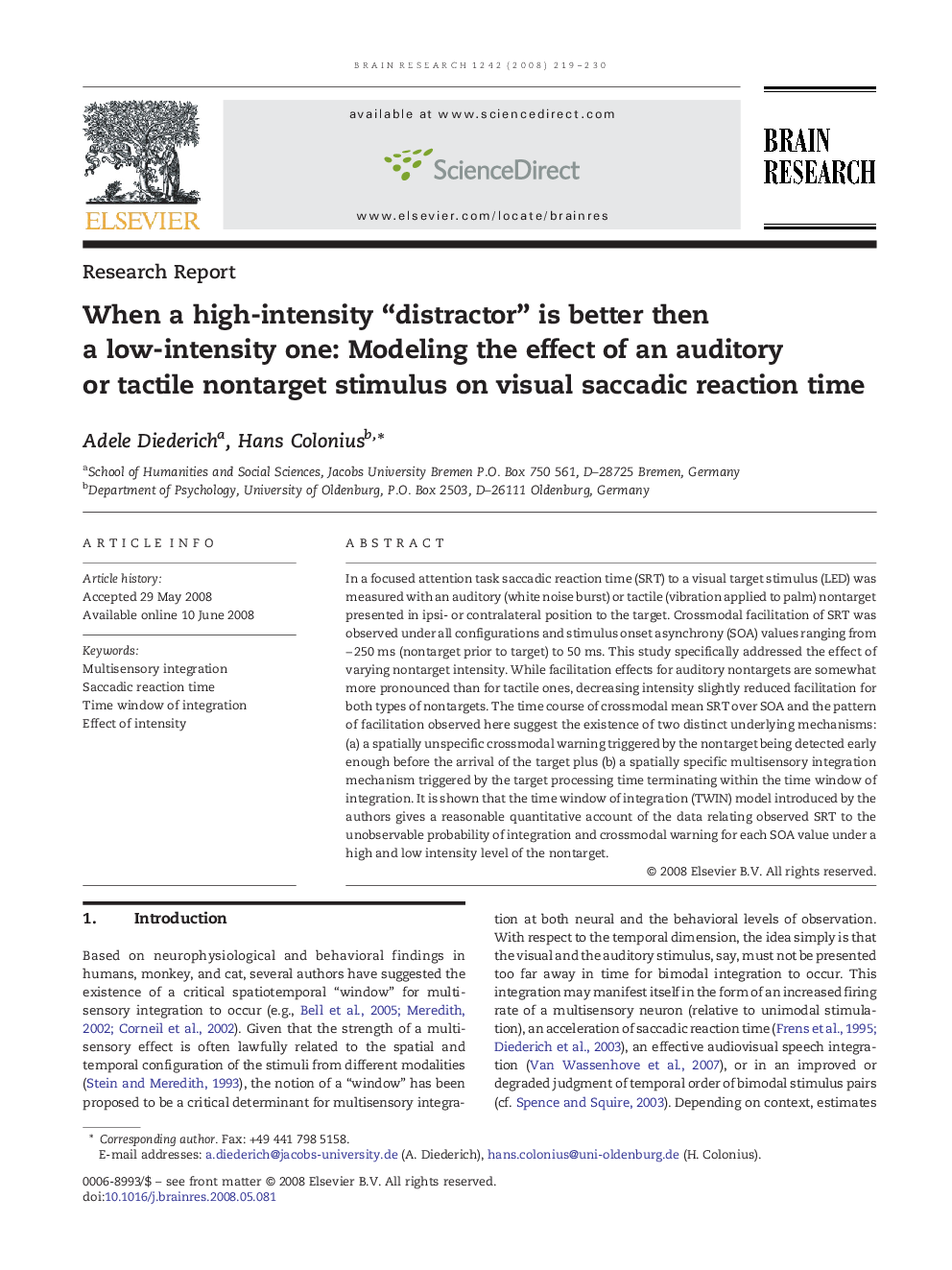| Article ID | Journal | Published Year | Pages | File Type |
|---|---|---|---|---|
| 4328930 | Brain Research | 2008 | 12 Pages |
In a focused attention task saccadic reaction time (SRT) to a visual target stimulus (LED) was measured with an auditory (white noise burst) or tactile (vibration applied to palm) nontarget presented in ipsi- or contralateral position to the target. Crossmodal facilitation of SRT was observed under all configurations and stimulus onset asynchrony (SOA) values ranging from − 250 ms (nontarget prior to target) to 50 ms. This study specifically addressed the effect of varying nontarget intensity. While facilitation effects for auditory nontargets are somewhat more pronounced than for tactile ones, decreasing intensity slightly reduced facilitation for both types of nontargets. The time course of crossmodal mean SRT over SOA and the pattern of facilitation observed here suggest the existence of two distinct underlying mechanisms: (a) a spatially unspecific crossmodal warning triggered by the nontarget being detected early enough before the arrival of the target plus (b) a spatially specific multisensory integration mechanism triggered by the target processing time terminating within the time window of integration. It is shown that the time window of integration (TWIN) model introduced by the authors gives a reasonable quantitative account of the data relating observed SRT to the unobservable probability of integration and crossmodal warning for each SOA value under a high and low intensity level of the nontarget.
